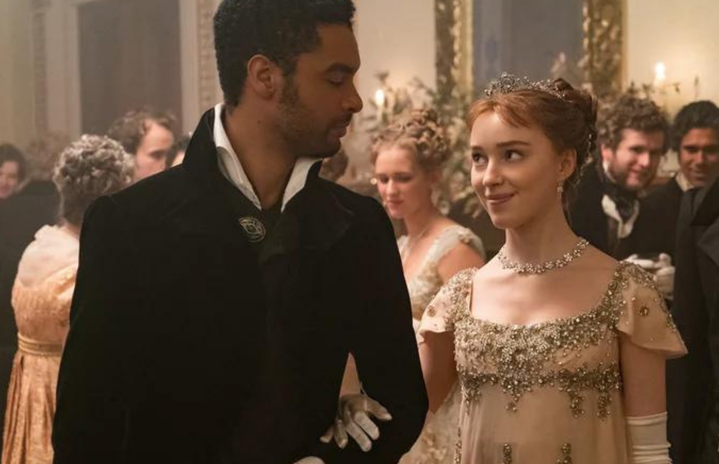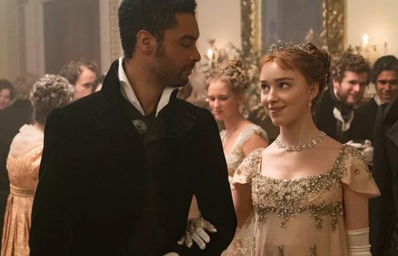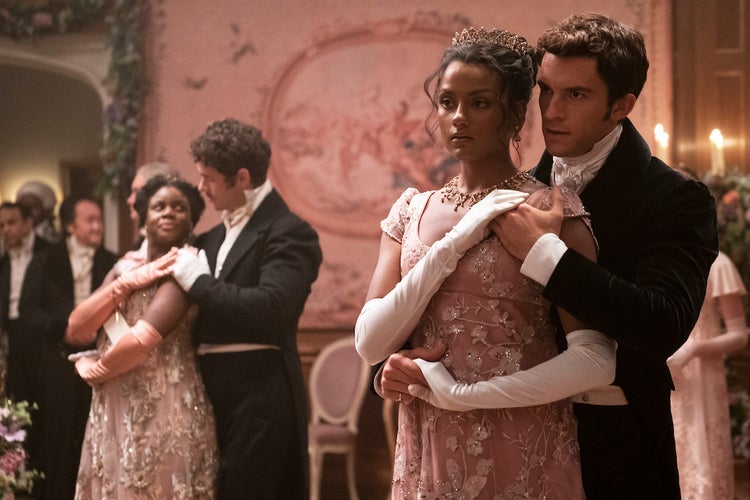OK, I’ll say it: this romantic scene from Pride and Prejudice (2005) is one of the hottest moments in cinematic history. The zoom-in when Lizzie and Mr. Darcy’s hands intertwine, the alternating close-ups of their faces, the subtle hand flex as Mr. Darcy is walking away…the whole thing is almost too hot to handle. And yet, the physical touch in the scene only lasts for about one second. This is a prime example of a film being sexy without even showing sex, and why I think steamy tension on TV and in movies can be hotter than sex itself.
There’s something about the “will they, won’t they” relationship between two onscreen characters that says more about their connection than actual physical contact ever could. Much like the common phrase says, “the eyes are the window to the soul,” and eye contact alone can be a sexy form of intimacy, even if it involves zero touching. Holding eye contact triggers the generation of oxytocin (AKA the love hormone); one study published in the Journal of Research in Personality found that strangers who made eye contact for two minutes experienced increased feelings of passionate love for each other.
The action creates what renowned psychology professor and author Barbara Frederickson refers to as “micro-moments of love” — in other words, love can reside within small, shared moments of connection during which two people are mindful and present with each other. We often witness these “micro-moments” in TV and movies with romantic stories. For example, we see micro-moments of love in Pride and Prejudice when characters exchange strong emotions within split-second shots (like the aforementioned “hand flex” scene). Another great example is this intense eye contact scene from Bridgerton season two that has the entirety of TikTok trying to mimic it. Remember this steamy moment in Divergent when main character Tris Prior takes a tour of her love interest, Tobias Eaton’s, tattoos? It’s safe to say the micro-moment had all of us swooning.
In my opinion, subtle behaviors and micro-moments make for more interesting entertainment. Films that focus on the “little things” embody the “show, don’t tell” mantra of filmmaking, which says viewers ought to experience the story through action, words, senses, and feelings instead of mere summarization. Bridgerton, the popular Netflix hit show produced by Shonda Rhimes, is a great example of this. When lead character Anthony Bridgerton looks at love interest Kate Sharma — both of whom are secretly in love with one another — viewers can see the longing and adoration they have for eachother. When Anthony teaches Kate how to hold an English gun while hunting in season two, the characters appear to have better chemistry than most sex scenes do.
Even when Kate is telling Anthony that he vexes her and he responds that she’s the bane of his existence, the look in their eyes says the exact opposite. And viewers’ obsession with this kind of sexual tension is evident; Bridgerton season two — which premiered on March 25 — is breaking records left and right. As one Twitter user says, the series is “sexy af and there’s barely any sex.”
Touch is also known to help build connections. Much like holding eye contact, physical touch (however subtle) can communicate what one is feeling in an instant without using words. According to a 2011 study on gender and communicating emotions, touch can be soothing, comforting, and helpful for expressing sexual and romantic interest, and a 2006 study published in the Emotion journal claims that touch can be viewed as a form of language since it’s a primary way for humans to convey how they feel.
As demonstrated in Bridgerton, Pride and Prejudice, and more, when it comes to sex and romance, the “slow burn” can be better than instant gratification. The buildup of emotions between people — from eye contact without touching to a subtle brush of the hand — can create a sense of anticipation and eroticism. Seeing this form of tension onscreen often brings audiences to the edge of their seats, and in my opinion, makes for a more enticing viewership experience. Rather than rushing to the pinnacle of a steamy romance plot (usually, a big hookup scene), there’s more of a steady build that leaves us wanting more.
This isn’t to say that sexual intimacy and hookup culture aren’t OK, that having sex isn’t a meaningful way to connect, nor that you’re not truly “in love” unless you dramatically stare at your partner across a foggy field in England. Intimacy comes in many different forms, and it’s all about finding what works for you. But at the end of the day, viewers simply love to root for love, and micro-moments like a subtle hand flex or a longing stare can remind us that love is truly alive beyond just physical sex. Having emotions is hot, and I believe the “almost-touches” and longing expressions — on-screen and IRL — convey more than a sex scene ever will.




